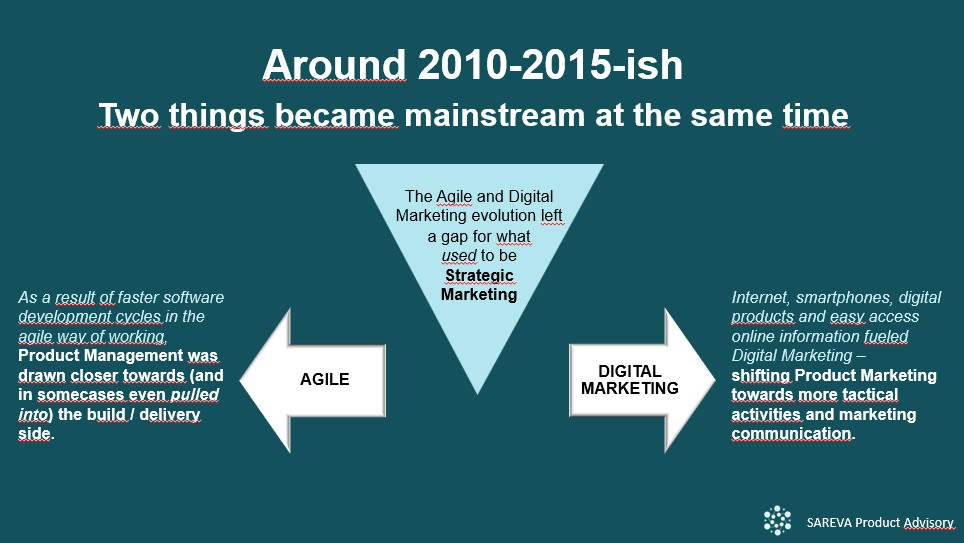When Agile and Digital Marketing Created a Strategy Gap
Eva Skoglund
(This article was published on LinkedIn on April 10, 2025.)

Agile and Digital Marketing causing a Strategy Gap
Agile and Digital Marketing impacted the evolution of Product Management and Product Marketing in the software and tech world
Around 2010-2015-ish two things happened roughly at the same time: Agile and Digital Marketing. Both of these movements impacted how Product Management and Product Marketing now operate in the software and tech world. Unfortunately, it happened at the expense of strategic market understanding - the Strategy Gap.
After having grown increasingly popular since around 2001, the agile software methodologies became more or less mainstream around 2010-2015. It drastically speeded up development cycles, which was a good thing. One of the side effects of agile was that it lowered the water on the already resource constrained Product Management function. When agile methodologies required product managers’ attention in daily stand-ups, sprint reviews, etc, Product Managers were gradually pulled into the Engineering side, resulting in almost all time spent at the build-side of the house.
When the internet became more and more accessible in the corporate world, in the late 90’s and early 2000’s, digital marketing started to take precedence over traditional marketing since easy access online information was speeding up business. When the smartphone arrived and became every person’s device, around 2010-2015, digital marketing became the default. The side effect on Marketing was a shift towards marketing communications, optimized on short-term focus. The classic Product Marketing function, that used to be deeply rooted product and market understanding, became more of a tactical role.

Both of these movements happened at the expense of strategic market understanding. Many topics that are fundamental for business success in B2B became neglected. For example:
What problem is our solution truly solving at customers?
How is that problem valued (in money) at customers?
Which customers benefit the most from our solution?
How do we segment the market?
What segment is a good fit with the product strengths we have?
What direction are customers moving in?
How does the ecosystem work?
Where in the value and supply chain do we have a strategic fit?
In what way does our solution affect the customer’s business?
What business model makes for a win-win for us and the customer?
Etc.
All such questions are about strategic marketing in B2B. It’s about the fundamental understanding of why, how and whereour solution fits the market. And many of those questions have unfortunately taken a back seat for far too long.
Product Management is a business role
Contrary to what some may think these days, Product Management is a business role – it’s about solving business problems for customers. It’s not a build-role, or a role that focuses on defining solutions (our talented Engineering teams are the experts there). Partially the roots of Product Management come from Strategic Marketing (not to be confused with Marketing Communications). But when agile and digital marketing happened around the same time frame, many of those fundamental strategic questions fell between chairs. Product Management got busy on the build-side of the house, and Product Marketing became occupied with tactical promotional activities.
This is how the Strategy Gap occurred.
It’s time to reclaim the strategy field.